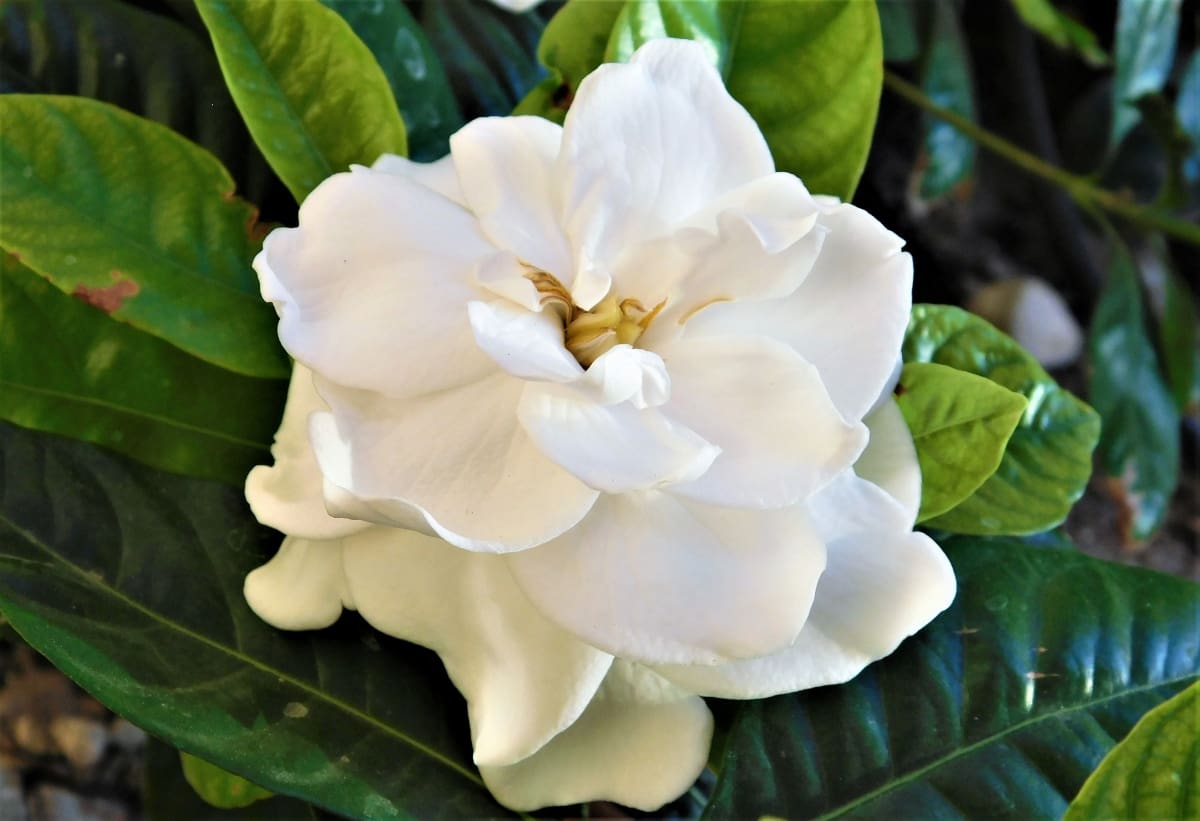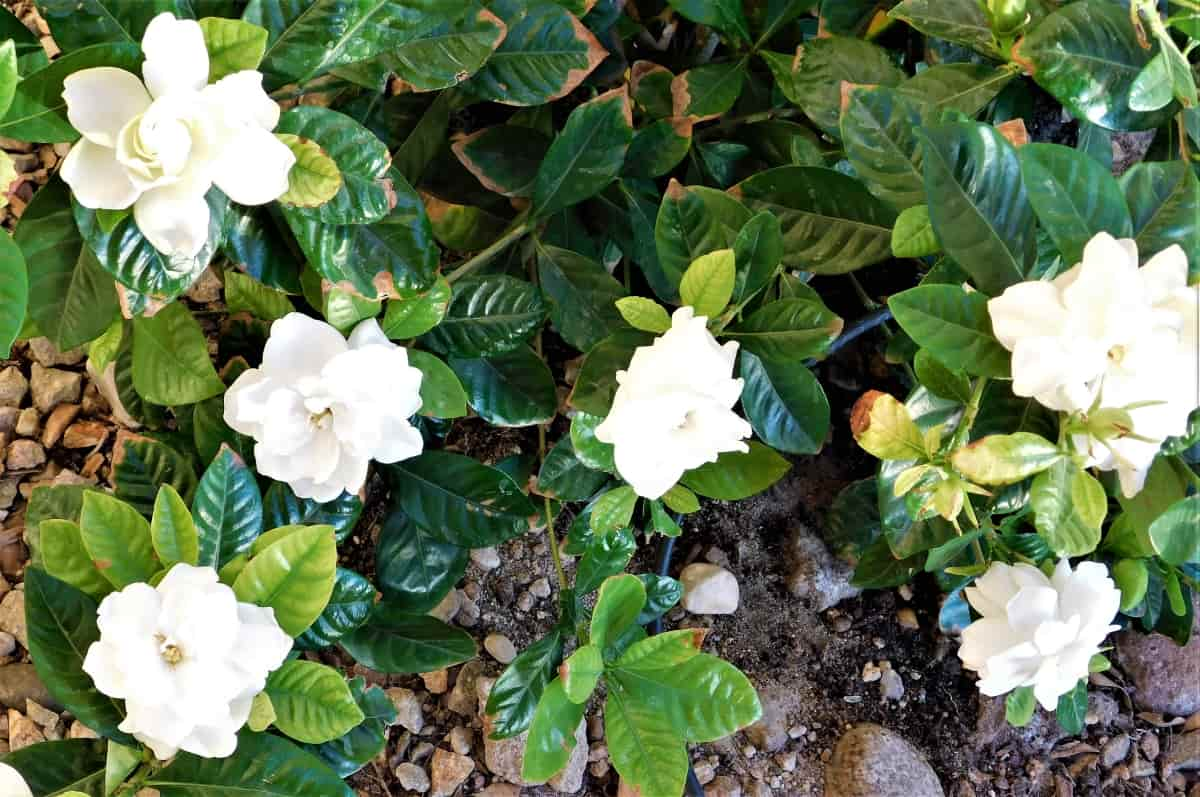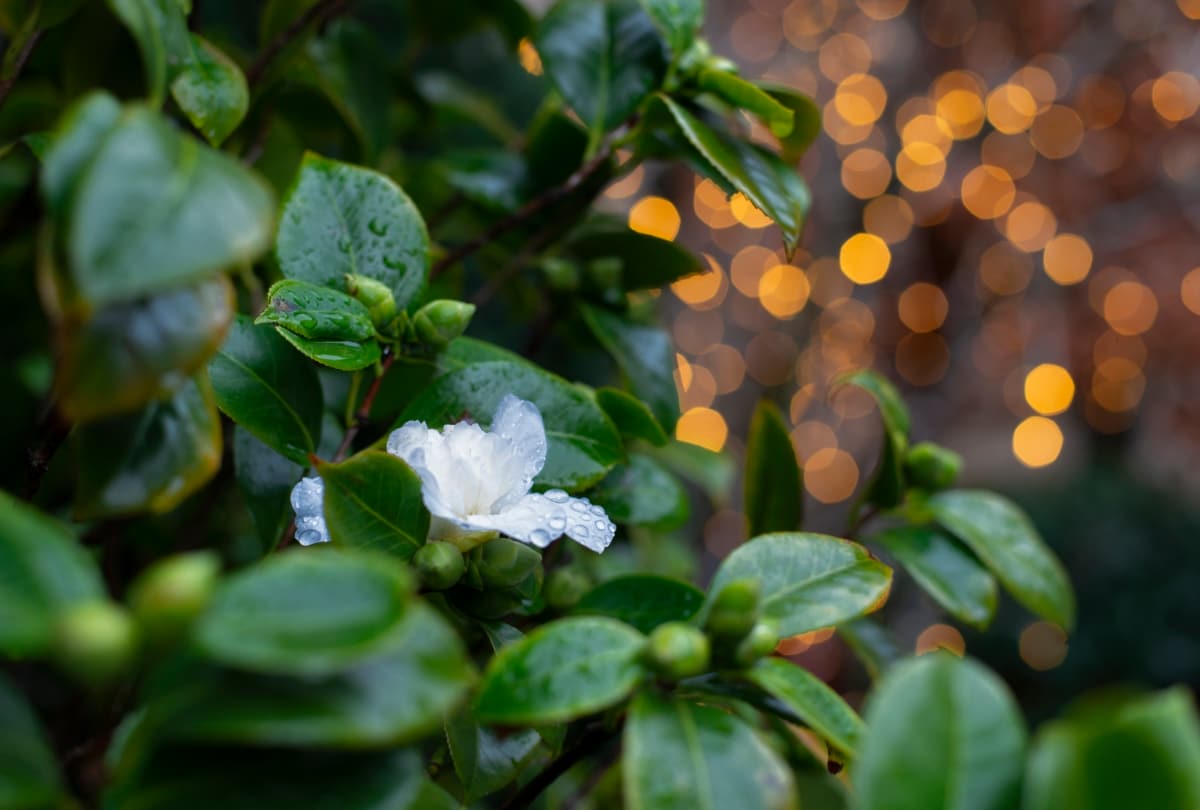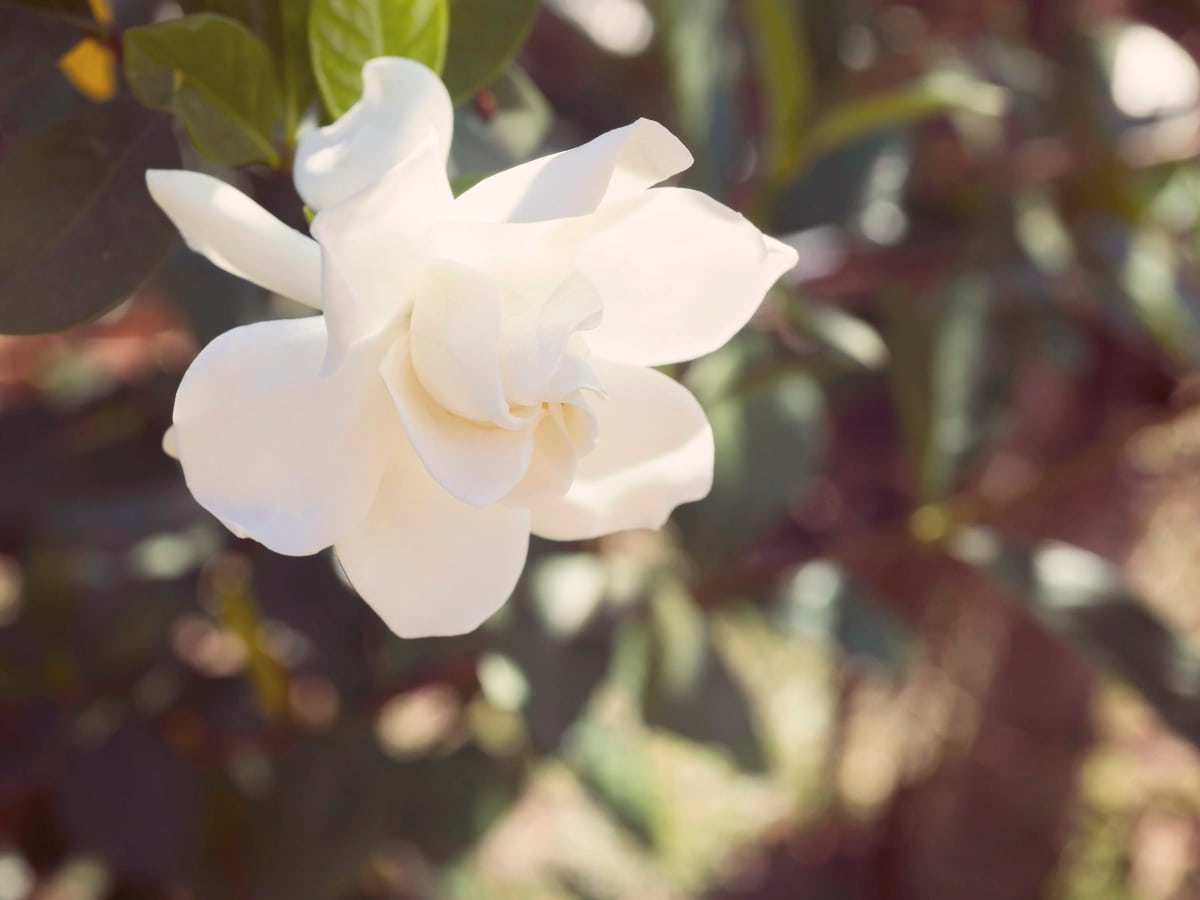Gardenias belong to the coffee family, Rubiaceae. With their exquisite white blossoms, They add elegance and beauty to gardens and indoor spaces alike. The scientific name for this stunning plant is Gardenia jasminoides. Gardenias are popular choices for gardens and indoor spaces alike. Below are some common issues and potential remedies to help your Gardenia thrive and produce beautiful blooms.

Insufficient Light: Remedies and Artificial Lighting Solutions
Gardenias thrive in bright, indirect sunlight, so if yours isn’t getting enough, it might struggle to produce blooms. But don’t worry – there are remedies and solutions to help your plant flourish. Consider moving your Gardenia to a spot with more natural light or supplementing it with artificial lighting. LED grow lights can mimic the sun’s rays and provide the necessary light spectrum for optimal growth. Be sure to position the lights at the right distance from the plant to avoid burning its leaves.
Improper Watering: Adjustments and Monitoring Techniques
Improper watering is often the culprit behind Gardenias’ lack of blooms. Finding the right water balance is key to unlocking the plant’s full blooming potential. Gardenias thrive in moist but well-draining soil. Overwatering the Gardenia can lead to root rot, while underwatering can stress the plant and inhibit flowering.
To remedy improper watering, adjust your watering schedule based on the plant’s needs. Test the soil moisture level—if it feels dry, it’s time to water. Make sure to use a moisture meter for more accurate monitoring. This tool can help you gauge when it’s time to water and prevent over- or under-watering issues.
Nutrient Deficiencies: Organic Fertilizers and Soil Amendments
Nutrient deficiencies can be a common reason why your Gardenia is not blooming as vibrantly. Organic fertilizers and soil amendments play a major role in providing the necessary nutrients for your plant to thrive. Organic options such as compost, manure, or bone meal can help replenish essential minerals in the soil naturally.
In case you missed it: How to Grow and Care for Gardenia in Pots: A Step-by-Step Guide for Beginners

By incorporating organic matter into the soil, you ensure a slow release of nutrients, avoiding the risk of over-fertilizing and harming your plant. It’s like giving your Gardenia a balanced diet tailored to its specific needs.
Incorrect Soil pH: Testing and Balancing Methods
The incorrect soil pH can hinder nutrient uptake, leading to lackluster blooms. Testing the soil pH is crucial in determining if your Gardenia is facing this issue. Balancing the soil pH involves using amendments like sulfur or lime to adjust it to the ideal range for Gardenias, which is slightly acidic. Remember, maintaining proper soil pH is an ongoing process, as it can fluctuate over time. Regular testing and adjustments will ensure that your Gardenia has optimal conditions for healthy growth and abundant flowering.
Temperature Stress: Protection Strategies and Microclimate Creation
Temperature stress can be a major factor in preventing your Gardenia from blooming to its full potential. Gardenias prefer consistent temperatures and are sensitive to extreme heat or cold. To protect your Gardenia from temperature fluctuations, consider strategically placing it near larger plants or structures that can provide shade during the summer days. This will help create a microclimate that is more suitable for your plant’s needs.
During colder months, you can use frost cloth or mulch to insulate the soil around your Gardenia and protect it from freezing temperatures. Avoid placing your plant near drafty windows or doors where it may experience sudden temperature drops.
Over-fertilization: Recovery Steps and Controlled Feeding
If you suspect over-fertilization is the culprit behind your non-blooming Gardenia, don’t panic. There are steps you can take to help your plant recover. Firstly, stop fertilizing immediately. Your Gardenia needs time to flush out the excess nutrients before it can resume its normal growth cycle. Consider flushing the soil with water to help dilute and remove any built-up fertilizer residues.
In case you missed it: 8 Reasons Why Your Potted Hibiscus is Not Blooming: Fix it with Simple Solutions

After giving your plant a break from feeding, gradually reintroduce a balanced fertilizer at half-strength. This controlled approach will prevent further stress on your Gardenia while still providing essential nutrients for blooming potential. Remember, fertilizer moderation is key when it comes to feeding your plants.
Pests and Diseases: Natural Treatments and Preventive Measures
Pests and diseases can affect your Gardenia’s blooming potential. From aphids to fungal infections, these unwelcome guests can stunt growth and hinder those beautiful blossoms from emerging. The effective method is using neem oil spray, a natural insecticide that keeps pests at bay without harming beneficial insects. Another option is introducing ladybugs or lacewings to your garden as they feast on aphids and other harmful bugs.
Powdery mildew or leaf spot are major fungal diseases; a mixture of baking soda and water sprayed onto the leaves can help prevent their spread. Ensuring proper air circulation around the Gardenia plant can deter fungal growth. Remember, prevention is important to maintaining a healthy Gardenia that blooms vibrantly year after year.
Improper Pruning: Best Practices and Timing
To ensure healthy growth and abundant flowers, it’s crucial to follow best practices and timing when trimming your plant. Gardenias generally benefit from light pruning after flowering to shape the bush and encourage new growth. Use sharp tools to make precise cuts without causing unnecessary damage. Trim back about one-third of older wood each year to promote fresh shoots and increase flower production. Remember that Gardenias bloom on old wood, so be cautious not to prune excessively and reduce next season’s blossoms.
Lack of Acclimatization: Gradual Exposure and Environmental Adjustment
Acclimatization is crucial for your Gardenia to thrive and bloom. When introducing a new plant, gradual exposure to its new environment is key. Gardenias are sensitive to sudden changes, so take it slow. Start by placing the Gardenia plant in a shaded area for a few hours each day before moving it into direct sunlight.
Allow your Gardenia time to adjust to variations in light, temperature, and humidity levels. Pay attention to any signs of stress, like yellowing leaves or wilting flowers; these could indicate acclimatization issues. To help your Gardenia adapt, try misting plant leaves by using water or using a humidifier nearby. By providing a stable and suitable environment, you can support your Gardenia’s acclimatization process effectively.
Seasonal Variations: Understanding and Planning for Gardenia Blooming Cycles
Gardenias have distinct blooming cycles that are influenced by changes in temperature, daylight hours, and overall environmental conditions. During the warmer months, Gardenias thrive in bright sunlight and moderate temperatures. These conditions promote healthy growth and abundant blooming. However, as the seasons change and cooler weather sets in, Gardenias may enter a period of dormancy where blooming decreases.
In case you missed it: How to Grow Gardenias from Cuttings: A Detailed Guide to Planting to Harvest

Adjust your care routine accordingly to plan for these seasonal fluctuations. During colder months, move potted Gardenias indoors or use frost cloth to shield outdoor plants from harsh temperatures. By staying attuned to the natural rhythms of your Gardenia’s blooming cycles, you can better anticipate its needs and ensure a continuous display of beautiful flowers throughout the year.
Root Competition: Space Management and Companion Planting Strategies
Root competition can be a common reason why your Gardenia is not blooming as expected. When the roots of your Gardenia plant have to compete with other nearby plants for nutrients and space, it can hinder its growth and flowering potential. To address this issue, consider implementing space management techniques by providing adequate distance between plants to prevent overcrowding.
Companion planting is another effective strategy to alleviate root competition for your Gardenia. Additionally, regular monitoring of plant spacing and root development is crucial to identify any signs of competition early on. Addressing these potential issues and providing the necessary care can encourage your Gardenia to bloom profusely. Patience and consistent maintenance are key to enjoying this beautiful plant’s fragrant blooms.
- How to Grow Hibiscus from Flower
- Plantation Ideas for Home Decoration: A Beginners Guide
- Flower Garden Designs and Layouts for Beginners
- Planting and Spacing Techniques in Papaya: A Beginner’s Guide
- Growing Gold: Essential Techniques for Planting Pineapples
- How to Make Kalanchoe Plant Bushy: Home Remedies and Solutions
- 11 Reasons Why Your Gardenia is Not Blooming: Home Remedies and Solutions
- Eco Elegance: The Guide to Designing a Drought-Tolerant Landscape
- Gardening on a Slope: Strategies for Hillside Landscaping